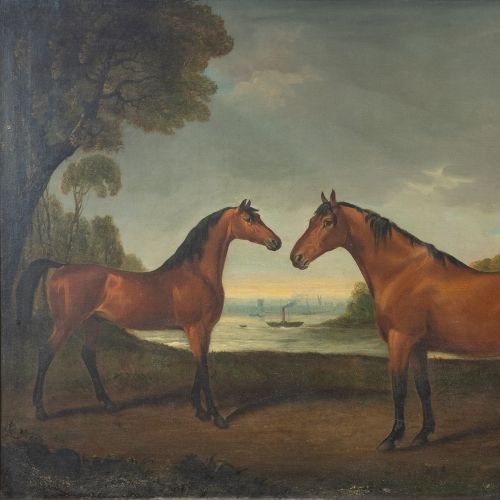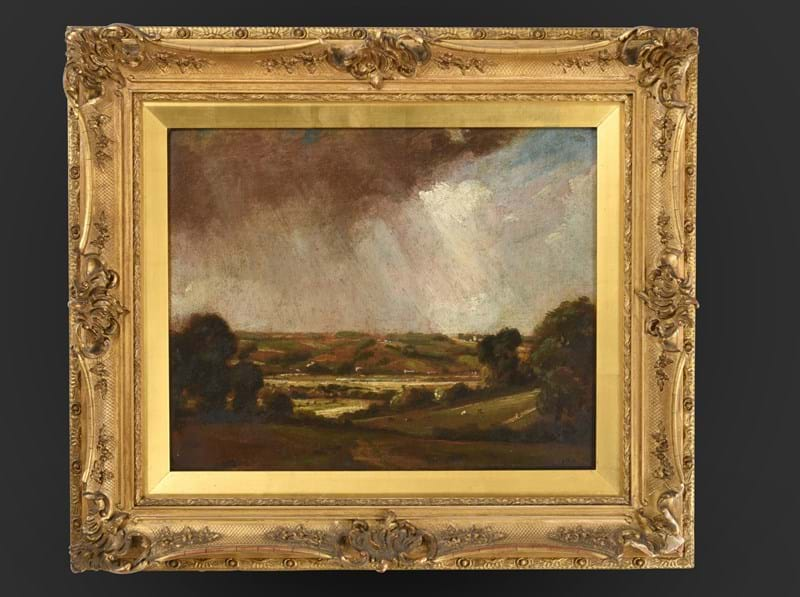Maud Lewis (1903-1970) was a Canadian folk artist and remains one of Canada’s best-loved artistic figures. Living in poverty for most of her adult life, she painted joyous, nostalgic and vibrant pictures of rural life in her Nova Scotia home. Two paintings by Maud Lewis will be offered in the Modern and Contemporary Art Sale on 5th October, The Bride (estimate: £8,000-12,000 plus buyer’s premium), and Sandy Cove (£6,000-9,000 plus buyer's premium).
News & Insights
Maud Lewis: Canadian Folk Artist
Maud Lewis (1903-1970) was a Canadian folk artist and remains one of Canada’s best-loved artistic figures. Living in poverty for most of her adult life, she painted joyous, nostalgic and vibrant pictures of rural life in her Nova Scotia home.
Maud Lewis, nee Dowley, was born into a middleclass family in Yarmouth, Nova Scotia. Her father was a blacksmith and owned a harness shop, but despite relative affluence Maud’s childhood was not easy. She suffered from Juvenile rheumatoid arthritis, resulting in severely sloping shoulders, curvature of the spine and a recessed chin; Lewis spent much of her life in pain. Her mother, however, had an artistic nature, and taught Maud to paint Christmas cards which they would sell.
After her parents died in the mid-1930s, Maud had no resources and went to live with her aunt in Digby, Nova Scotia. After seeing an advert for a live-in housekeeper 40-year-old bachelor Everett Lewis had placed, Maud turned up on his doorstep in nearby Marshalltown. Whilst apparently the pair did not hit it off immediately, a few days later Maud returned to his house and stated that she would not be his housekeeper but would be his wife. The pair married in 1938, and Maud moved into the tiny 4.2m x 3.8m house, with one-room and sleeping loft, where they would live for the rest of their lives, with no running water or electricity.
Everett was a fish peddler, and Maud began accompanying him on his rounds, selling the Christmas cards she painted. Soon, Everett gave Maud her first set of oil paints, and they began selling her paintings too, all for very modest prices. Due to her ailments, Maud could not find employment, and indeed Everett even took over all domestic duties whilst Maud turned their little house into her studio and painted industriously – including every surface in their home. When Everett gained more stable employment, Maud put up a sign and sold her paintings from their home, which was on the side of the highway. Neighbours and tourists soon began flocking to purchase her colourful work but determined not to raise prices and put off buyers, the pair continued to live in poverty.
Working on a small scale due to her limited mobility, Maud painted on cheap materials, such as a pulpboard used in the building trade known as beaverboard, and later ready-cut Masonite. After painting the board with a white ground, she would draw on an outline and then apply paint straight from the tube without mixing or blending. Maud focussed on a set range of subjects, mostly derived from memories of childhood and her surroundings in Nova Scotia before the onset of modernity; cats, deer and oxen, landscapes and depictions of harbour scenes, horse-drawn carts and sleighs. Nostalgic, yet optimistic, her works a happy simplicity with a touch of humour. Her most popular subjects were painted again and again, with minor variations, such as the present example Sandy Cove. This was one of only a select few subjects she painted across three decades. Sandy Cove is located on a long peninsular in the Bay of Fundy, not far from the Lewis’ home in Marshalltown. The other work up for sale, The Bride, is a more unusual subject for the artist, with far fewer variations known.
Coming to the attention of a journalist, Maud became the subject of a radio documentary and subsequently a newspaper article in the mid-1960s. Her work captured the attention of the nation, and she achieved widespread recognition. However, with only limited ability to paint, she struggled to keep up with orders, and resolutely refused to charge more for her paintings, despite the likes of a staffer at the Whitehouse during Nixon’s presidency requesting more of Lewis's works to add to his collection.
Today, her work is represented in museums and galleries around the world, with a large collection being found in the Art Gallery of Nova Scotia. Following her death from pneumonia in 1970s and Everett’s death in 1979, a permanent memorial was erected on the site of their home. Having captured the nations hearts, Maud’s life would become the subject of books, plays, and three films.
< Back to News

10th January 2026, 09:30
Plan your visit to our Leyburn Head Office and Salerooms, or the Harrogate Office
Get your antiques and collectables valued by our team of specialists.











